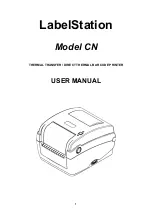
20
N
Ne
ee
ed
d h
he
ellp
p??
Question 1
How do I make doughnuts with my
breadmaker?
How does it make the hole?
The breadmaker only makes the dough for the
doughnuts. You must form and fry the doughnuts in a
conventional deep fryer.
Question 2
What should I do if the kneading blade
comes out with the bread?
Remove it with a pair of plastic tongs before slicing
the bread. Since the blade can be disconnected from the
pan, it is not a malfunction if it comes out in your bread.
Question 3
Why does my bread sometimes have some
flour on the side crust?
In some cases, the flour mix may remain on the
corners of the baking pan. When this happens, it
usually can be eaten or simply trim off that portion of
the outer crust with a sharp knife.
Question 4
Why isn't the dough mixing? I can hear the
motor running.
The Kneading Blade or baking pan may not be
inserted properly. Make sure the pan is facing the right
way and that it has ‘clicked’ and seated into the
bottom of the breadmaker.
Question 5
How long does it take to make bread?
Timings for each setting are outlined on page 7.
Question 6
Why can't I use the timer when baking
with fresh milk?
The milk will spoil if left sitting in the machine too
long. Fresh ingredients such as eggs and milk should
never be used with the delayed timer feature.
Question 7
Why do I have to add the ingredients in a
certain order?
This allows the breadmaker to mix the ingredients
in the most efficient manner possible. It also serves to
keep the yeast from combining with the liquid before
the dough is mixed.
Question 8
When setting the timer for morning, why
does the machine make sounds late at night?
The machine must start operation several hours
before the bread will be ready. These sounds are made
by the motor when kneading the dough. It is a normal
operation, not a malfunction.
Question 9
The kneading blade is stuck in the bread
pan. After baking how do I get it out?
The kneading blade may ‘stick’ in place after
F
Fa
as
sttb
ba
ak
ke
e
The Fastbake programme (58 mins) is designed to
produce a traditional white loaf in a fraction of the
time it takes with the standard programme. Quality of
taste and texture is generally retained using this
method. The cycle time is reduced by starting the
dough mixture at higher temperature so the
ingredients and temperature are more critical.
• As the Fastbake programme is dependent on the
correct water temperature, it is recommended that
you do not use the delay timer.
• Use lukewarm water at 30-32°C. If cooler liquid is
used a short loaf of bread will be obtained. If
hotter liquid is used, the yeast can be killed.
• All ingredients should be at room temperature.
• Do not attempt to make 100% whole wheat or
other natural grain breads, as this setting is
unsuitable.
• Always use strong white bread flour, recipes using
Fastbake should contain at least 65% white bread
flour.
• Do not open the lid.
• The keep warm function operates as usual with this
programme (bread will be kept warm for 1 hour).
• If baking several loaves, turn off, remove the pan
and allow to cool with the lid open for at least 30
minutes between makings. This will allow the
control to cool down for accurate temperature
sensing which is critical for Fastbake.
• A crack may form on top of the crust caused by the
higher temperature which is a feature of traditional
bread.
• Loafs of bread made on this setting can be shorter
and the texture moister.
Fastbake white bread
1
1/
2
lb
2lb
Water
1
1/
8
cups
1
1/
2
cups
Sugar
4 tsp
5 tsp
Salt
1 tsp
1
1/
2
tsp
Milk powder
2 tbsp
3 tbsp
Oil
4 tbsp
5 tbsp
Strong white bread flour
3 cups
4 cups
Easy bake yeast (fast action)
3 tsp
3
1/
2
tsp
Use setting
Fastbake
Fastbake





































